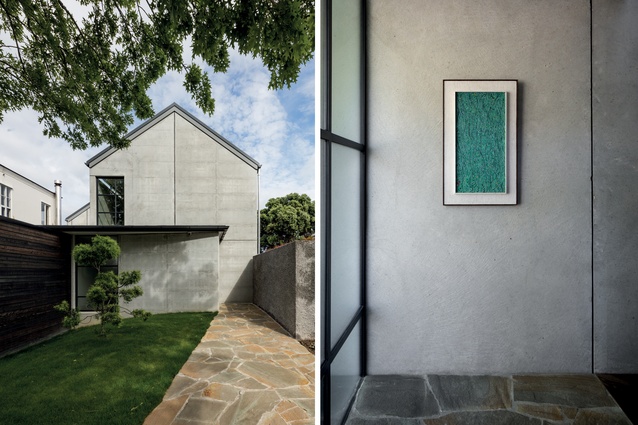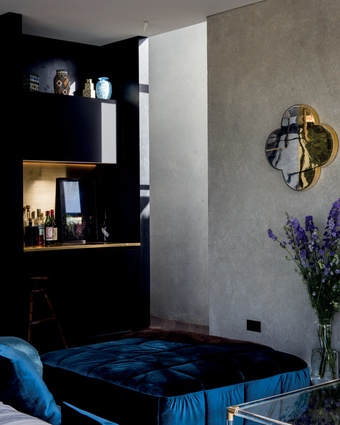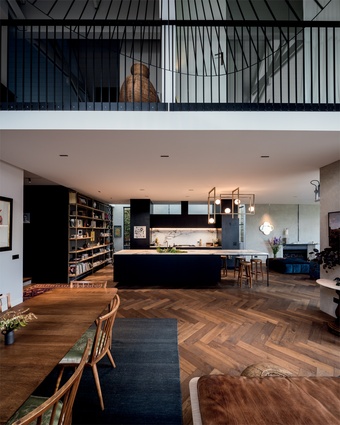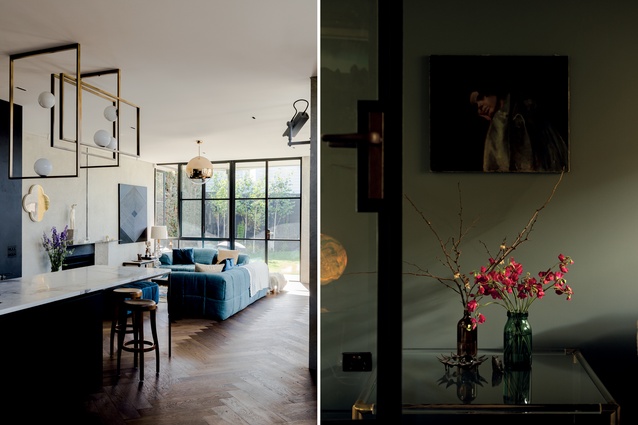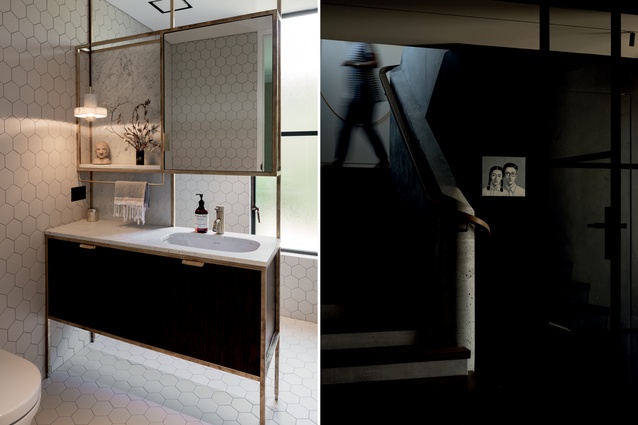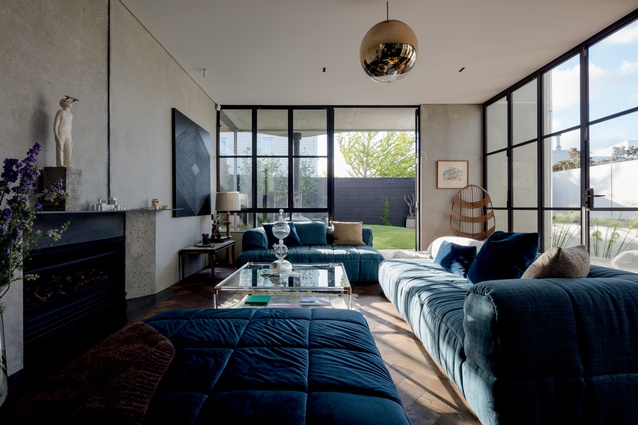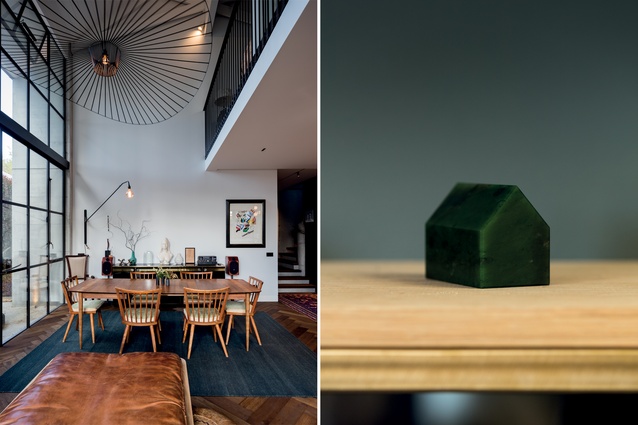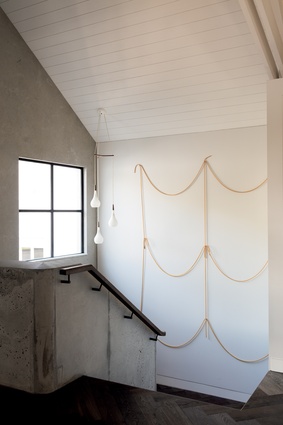Wunderkammer: Ponsonby House
It all began with a small, gable-roofed house hewn in pounamu by New Zealand sculptor Joe Sheehan. Sarah and Phillipe Lods took this precious object to potential architects to begin a conversation about a design for their own home.
In addition to Sheehan’s artwork, the couple found inspiration for architectural details and material finishes in Tom Kundig’s ‘The Pierre’ House and Jean Prouve’s oeuvre. With extensive experience in house renovation, this was their first new build. After much research, Ross Brown became their architect of choice.

The house is located in Ponsonby, Auckland and positions itself comfortably beside neighbouring villas, characterised by welcoming entrances and open verandahs. Its contextual fit is due, in large part, to the congenial disposition the house offers to the street.
Rather than hiding itself away behind a large fence, the clear-cut, gable form of the house is tempered by a landscape design that introduces soft, undulating curves and sculptural planting to the streetscape. In the evenings, a large hand-blown glass pendant, the ‘Tim’ light by Czech design studio Olgoj Chorchoj, illuminates the interior and creates a dynamic focal point for passersby to enjoy.
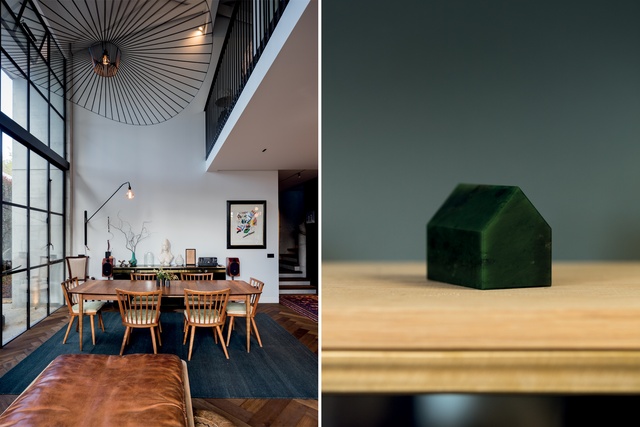
Slate crazy paving begins the transition from the street to the front door and continues into the entry vestibule. A terrazzo version of this paving, at a much smaller scale, features in one of the bathrooms and was inspired by the flooring in the entrance foyer to the historic Hotel DeBrett in Auckland.
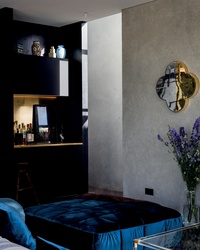
Treasured artworks and family heirlooms have been carefully considered in the design of the interiors. As you enter the house, you are contained within a low-ceilinged space where the focal point becomes a significant painting by Phillipe’s father, Pierre. Contemporary art by Michael Parekowhai, Fatu Feu’u and Andrew De Boer greet you as you proceed down a central corridor, catching a glimpse of a watercolour by Toss Woollaston in the distance.
The house is a study in contrasts. The low-ceilinged entry corridor and dark, moody retreat space, accessed by a set of internal glass doors similar to those found in traditional French apartments, make the transition into the voluminous open-plan kitchen, living and dining spaces especially dramatic. The large, steel Crittall windows in the dining space become a focal point and carefully frame a pair of frangipani plants, whose sculptural forms add interest to the landscape regardless of the season.
The flat site was excavated at the rear to have the living spaces on a lower level to the street. To achieve a contrast, the pool was then elevated. The garden, designed by Kerry Spiers, has been formed into a series of grassy knolls whose curves complement the curve used on the upstairs bedroom balcony above the living area and the lozenge form of the suspended outdoor fireplace by Aurora.
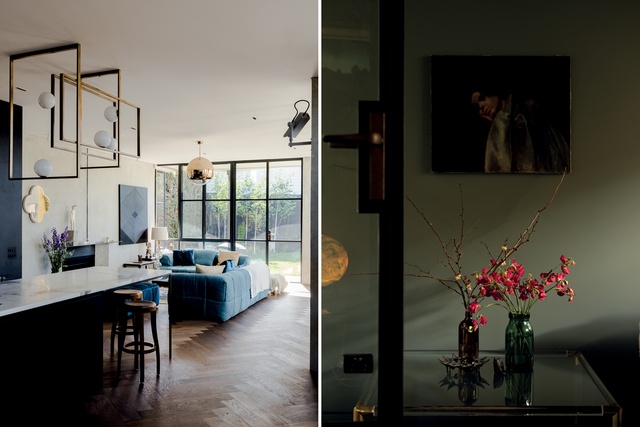
The smooth finish of the precast concrete panels (complete with a subtle pattern of squares) on the exterior is contrasted with the more porous, rusticated finish of the concrete poured in situ for the stairwell. This contrast comes into relief where the smooth curve of the solid oak handrail wends its way up the stairs, past a Peter Robinson felt artwork: rough beside smooth, hard surfaces against soft, textile sculptures.
Sarah works as a stylist, and still lifes composed of precious objet d’art and floral tributes are arranged throughout each of the interior spaces. These assemblages create focal points beyond the art on the walls or the dazzling play of light across the zigzag pleats of the oak, twice-smoked parquet floorboards. In the dining space, your eyes are drawn up to observe the slow oscillations of the Vertigo light by Constance Guisset. This lightweight fibreglass structure moves in response to air currents and, when lit, creates dramatic shadows on an adjacent wall.
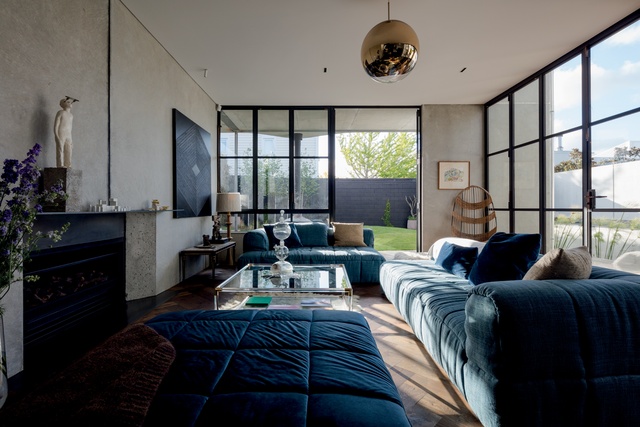
Sarah and Phillipe went to great lengths to procure unique light fittings for each space. The kitchen features a Mondrian glass ceiling light by Venicem, Italy, that suspends Murano glass diffusers in a natural brass frame. In the living space, a Strip Sofa (1972) designed by the trailblazing Italian architect Cini Boeri for Arflex takes pride of place. Featuring removable quilted covers in blue linen, it can be reconfigured at will.
Everywhere you look, you are beguiled by details that demonstrate a commitment to design at every scale: from the marble window sills to bespoke shelving systems and brass space dividers in the bathrooms.
The small sculpture that started this architectural adventure was made of pounamu. This ancient, precious material is celebrated for its rich interior life, for its capacity to hold light. The more light that passes through a piece of pounamu, the higher the quality.
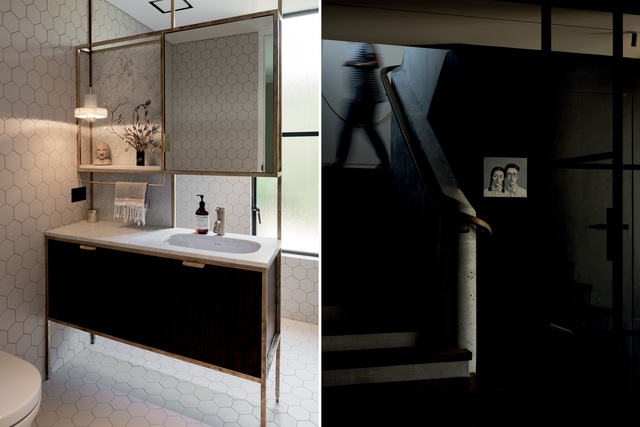
The Lodses have succeeded in creating a piece of architecture that, like the small precious object that was the catalyst for the design, manipulates light to enhance interior experience: from the large tracts of light flooding into the open-plan living spaces, to the soft, diffuse light achieved by using translucent glass in the bathing spaces and the judicious placement of artificial light throughout the interiors.
This house and its precious contents might be considered a form of Wunderkammer: a place where a collection of important objects are grouped together for mutual enjoyment to inspire wonder and stimulate thought.

